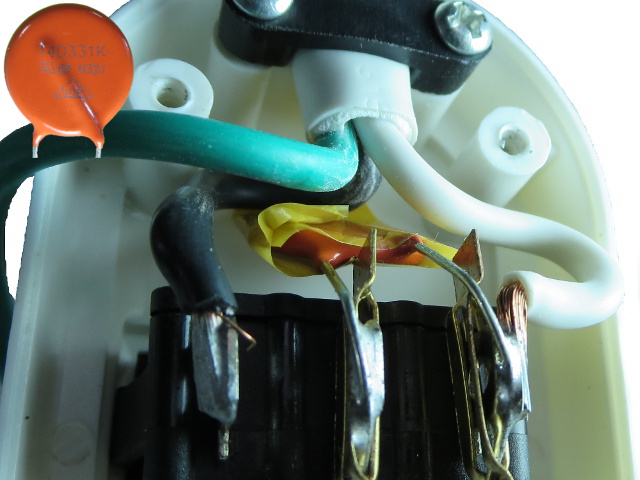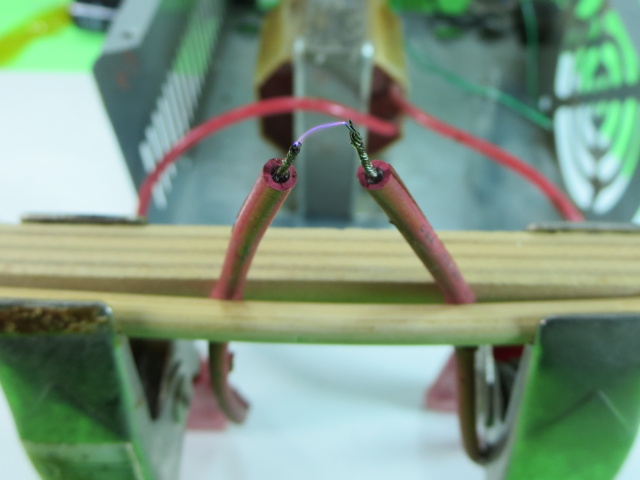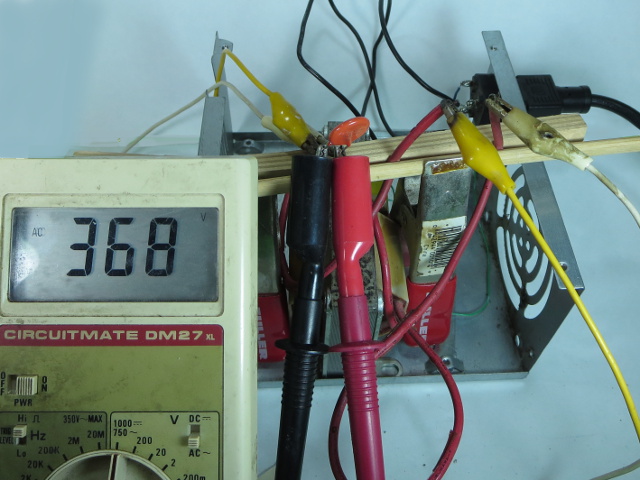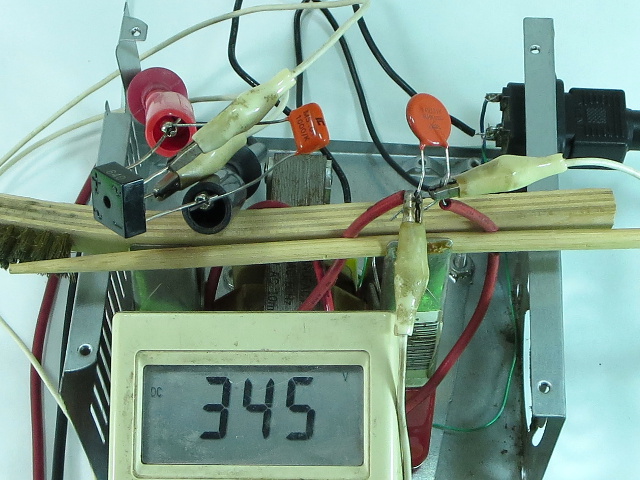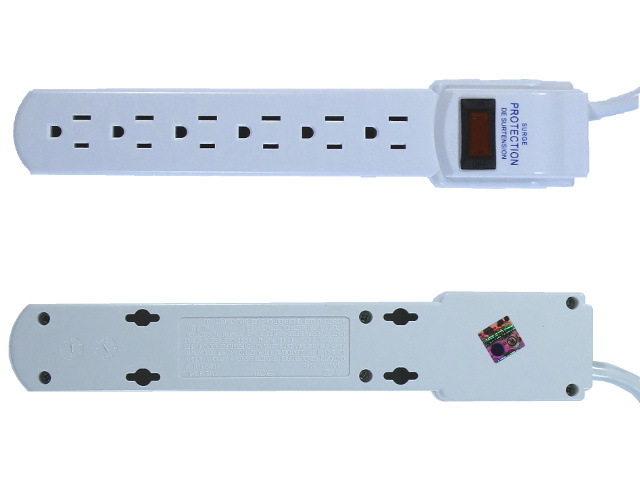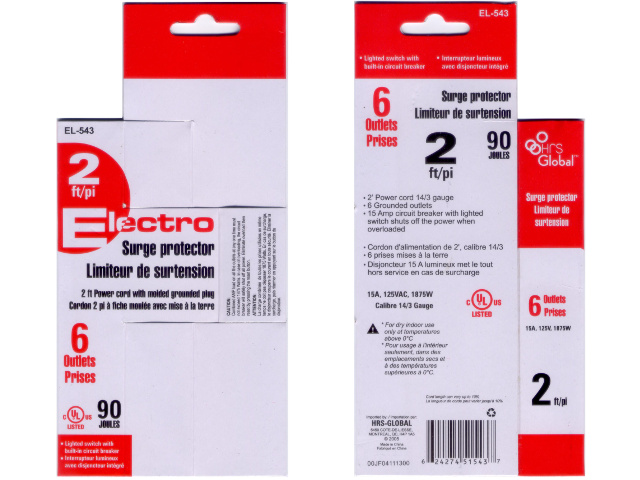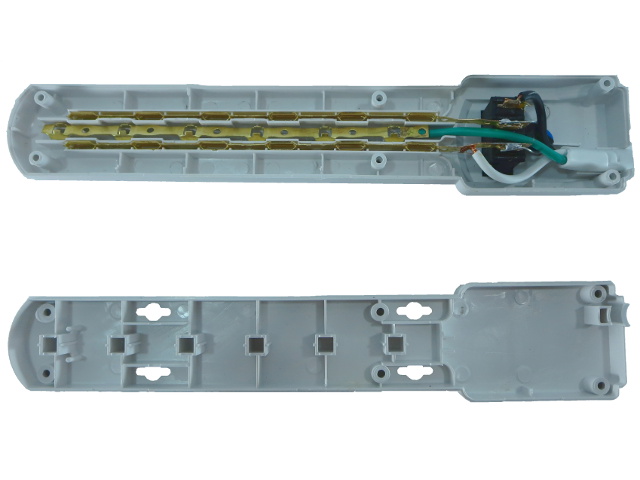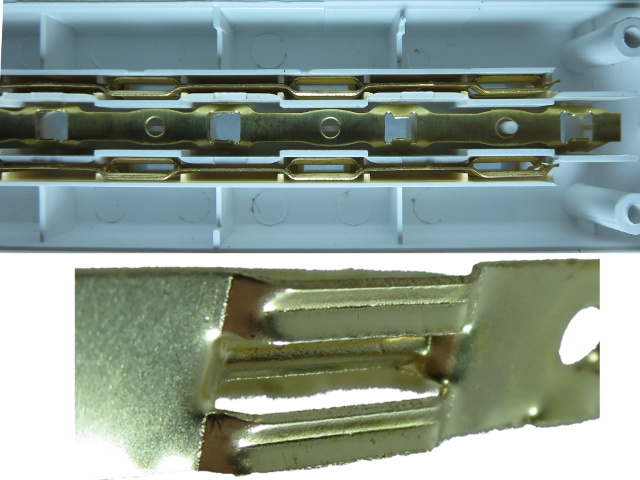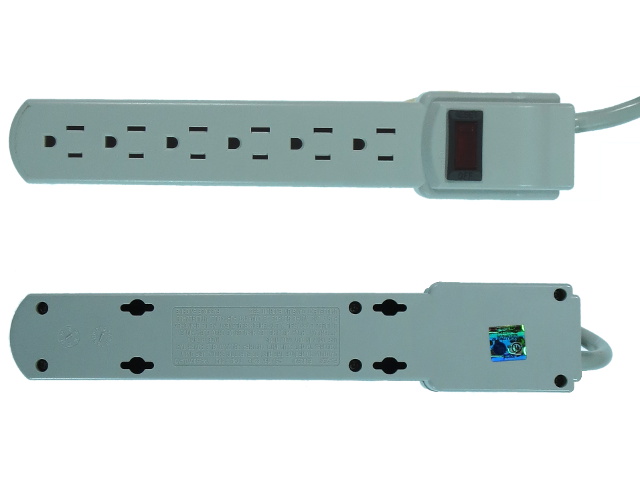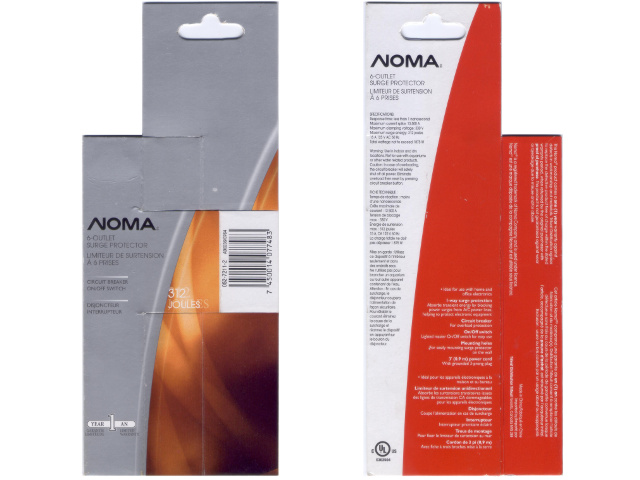Let's Take a Trip Inside Low-Cost Power Bars, Part One
Sunbeam's Firestarter
From this angle, we can clearly see both of the MOV's leads going straight across metal strips on the switch; there's definitely no thermal cut-off here. Digging out that taped device reveals a lone orange 14D331K MOV overlaid on the top-left corner, with no brand or other apparent markings on it apart from UL and VDE indicators. Its other side is completely blank, save for the bulge from the other side's lead. We see no larger lump hinting at the presence of an integrated thermal protection under its coating. These all look like red flags.
I contacted Sunbeam about this and was told they're looking into it. Did I get a counterfeit power bar? Considering the pressure dollar-stores put on their supply chain to source the cheapest stuff possible, this is definitively a possibility. It certainly does not look like a product that should be on store shelves.
Let's see if this MOV-like device has MOV-like properties.
Testing The AMOV (Anonymous MOV)
Since I do not have a proper high-voltage power supply on-hand, I decided to dig out a 3.5kV, 40mA oil furnace ignition transformer from my miscellaneous parts bin. A real 14D331K MOV should have a varistor voltage rating in the 300 to 360V range at 1mA, so I would expect the un-branded device to be somewhere near the top of that range at 40mA.
What Were You Expecting?
Before plugging in my 1000V multimeter and risk frying it at 3.5kV on a defective or fake MOV, I did a MOV-only test run to see if the MOV warmed up as expected from dissipating somewhere in the neighborhood of 1.5W (or about 350V * 40mA). Once I was reasonably confident the MOV was doing something MOV-ish, I attached my meter and read 368V.
Those of you who may have looked up my multimeter's datasheet might be screaming: “but your old meter is not True RMS” and you are absolutely correct: it uses non-linear analog integration, which makes it quasi-RMS. Let's try another measurement method just to be sure.
Double-Checking
For this re-test, I added a 400V diode bridge and a 10nF 1kV cap for peak detection. I am reasonably confident in this 345V result and a little surprised the quasi-RMS result over-estimated by only 8%. If you are wondering why I am using RMS and DC voltages interchangeably here, this works because a square wave symmetrical about 0V (3.5kVAC clipped to ±345V) has nearly identical RMS and peak voltages. The difference would go down further after accounting for the diodes' forward voltage drop and reverse leakage current.
Get Tom's Hardware's best news and in-depth reviews, straight to your inbox.
It looks like the MOV is real enough.
Our Second Contestant: Electro's EL-543
Coming out of a nearby flea-market, this $8 bar raises cord length to a slightly more useful 60cm (24”) and has a similar breaker-switch-indicator on the front. Its back cover features an UL holographic sticker with file number E302504. Warnings include not plugging this power bar into other power taps, use indoors in dry locations only and the “do not use within 10 meters or 30 feet from the electrical distribution panel” which I bet tons of people did not know existed until now – I honestly cannot remember noticing these warnings until now either. If you missed the explanation behind the 10 meters thing, revisit the Sunbeam Wall-of-Text slide.
Electro's Packaging
The packaging is the same style as Sunbeam's, claiming the same 90 joules of surge protection, but omitting its protection's voltage rating. You need to look at the back of the unit itself to find out its clamping is rated at 500V. Most of the rest is self-evident and already covered in the previous slide.
Inside The Electro
The overall construction is essentially the same with the live and neutral stamped metal strips connecting directly to the combination breaker-switch-indicator, and the MOV tucked behind the wiring, soldered directly to the switch. In this unit, the MOV does have a thermal protection device wired in series, as expected, and the two are held together by a small strip of heat-shrink tubing.
Electro Strips
Apart from the more jagged edges on the live and neutral strips, the ground and power strip designs are exactly the same as the Sunbeam model. Dimensions are different though: the power strips are 0.5mm x 4.6mm, while the ground strip is 0.4mm x 3mm after subtracting the holes. Still on the flimsy side, but better than Sunbeam's power strips.
Our Third Contestant: Noma's Nameless Unit
This is my first of two $15 entries, and I picked it up simply because Noma is one of those ubiquitous brands that seems to be everywhere. I own one old Noma bar, though it's welded or otherwise not easily opened: not so much as a squeak or a creak when I twist it or try to pry with a screwdriver. Our tear-down-friendly specimen has a 90cm (3') cord and not much else to distinguish it from the Electro.
Noma's Packaging
Yet another unit with that modest foldable packaging. Printing on the front is sparse. Warnings on the back only cover aquariums and indoor use. The surge rating goes to 13.5kA peak and 330V clamping voltage with a 312-joule capacity, so we can expect to see a 20D201K or equivalent (though those are only rated for surges up to 10kA).
-
qlum This article makes me wonder how well my own no brand power bars fare but I don't have the expertise to know what to look for when opening them and they probably look failry different from the US ones as well, at least they do on the outside. We use the german plugs here and also 230v is probably making a difference as well.Reply -
srap @qlum: I believe Tom's has a german branch, maybe we should ask them to do the same with europlugs.Reply -
Shin-san There has been several things I bought from Sunbeam, and I'll never buy from that company again (Sunbeam, Oster, Jarden, and Holmes). Their stuff simply doesn't last.Reply -
hp79 This article format really sucks. I click on "see more" just to see few more words.Reply
The article however is informative. Thanks for the write up. -
CaedenV @HP79Reply
Ya, the team that run's Tom's website really REALY sucks, the commenting section in IE sometimes doesn't show up, sometimes it shows up but you cannot do quotes, and sometimes you hit submit and it just gets lost in space. Clicking on a picture on any other website on the internet will take you to a larger or better quality picture, but on tom's the linked picture is often smaller/worse than the picture in the article. These kinds of picture+text articles are by far the worst though, offering minimal readability combined with smallish pictures. And we will not even get into how broken the Tom's charts are... it is just sad. And using Tom's without some sort of ad-blocking is an absolute nightmare! Tom's is the reason I use ad-blocking extensions in all of my browsers because it became such a hassle so early on.
But the content on Toms is often golden, and the data is both accurate and well explained. Not to mention that the community is amazing. It is more than worth putting up with a broken web page when the content is so good. -
Niccodemure Thank again. I am really looking forward to the name brands and hope they include Monster, PSaudio, Panamax, thurman, APC,Reply -
Flying-Q In the UK most power bars are unprotected, but there is a limit to the number of outlets you can expand from a single wall socket and most houses have been uprated to full RCCDs in the consumer unit supplying a ring main. Sadly, many people do not know of the 'max-4-expansions-per-socket' rule and 6-socket bars without protection are available to buy at hardware stores and supermarkets. That said, every UK plug must have a built-in wire fuse with 13A rating, or 5A or 1A depending upon the equipment.Reply -
Daniel Sauvageau Reply
This roundup was for sub-$15 power bars - all nine of them.14656840 said:Thank again. I am really looking forward to the name brands and hope they include Monster, PSaudio, Panamax, thurman, APC,
The goal was to show how much (or little) of a difference there is between inexpensive power bars with surge suppression ratings of some sort.
